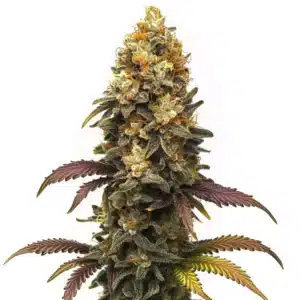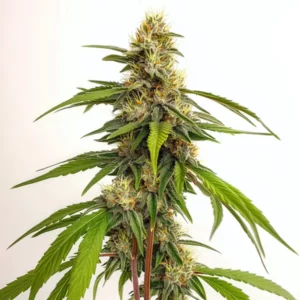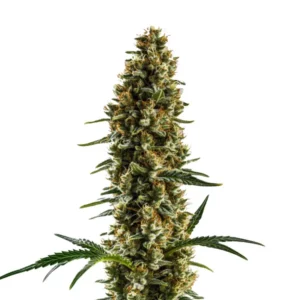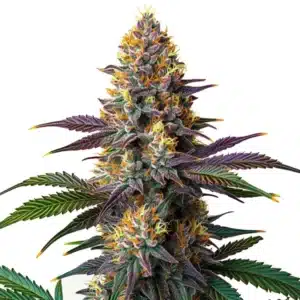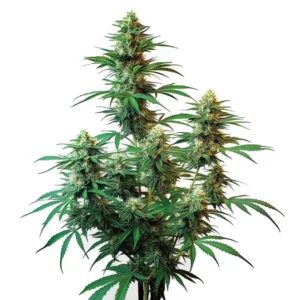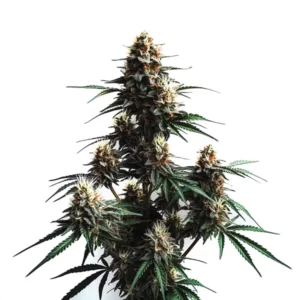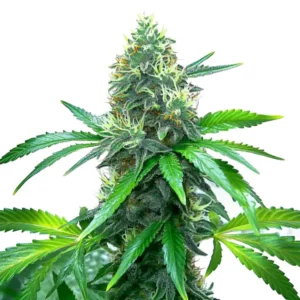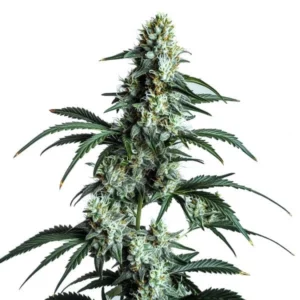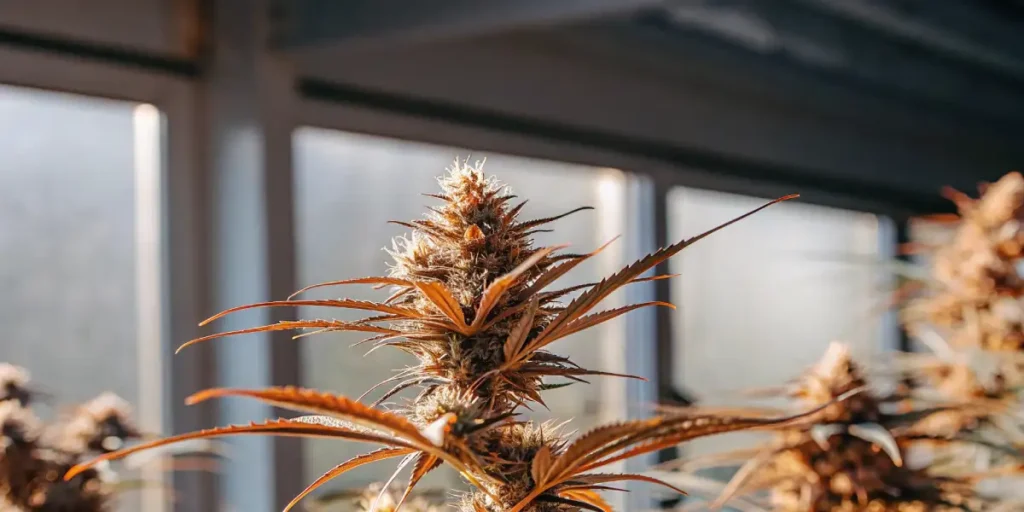
What Are The Primary Metabolites Of Cannabis?
Whether you’re a first-time cannabis seed buyer or an experienced cultivator, it’s vital to know about the primary metabolites of cannabis. What are the primary metabolites of cannabis? These chemical compounds are responsible for the plant’s distinct characteristics and effects. Let’s break it down into simpler terms for everyone to understand.
The primary metabolites found in cannabis are cannabinoids, terpenes, and flavonoids. Each one plays a unique role in defining the properties of different cannabis strains, such as those available on Blimburn Seeds. Learning about these metabolites can help growers select the right cannabis seeds to meet their cultivation goals.
Recommended Strains
Identifying primary cannabis metabolites is crucial because they are the primary active compounds in cannabis. They determine the strain’s potency, aroma, flavor, and medicinal benefits. Now, let’s delve into each of these metabolites to understand their role better.
Comprehending the main metabolites in cannabis does not only broaden your knowledge but can also significantly improve your cannabis cultivation or consumption experience. The chemical metabolites present in cannabis, including cannabinoids, terpenes, and flavonoids, work together to produce the plant’s unique properties and effects. Therefore, comprehending these compounds is essential for anyone involved with cannabis.
Cannabinoids: The Powerhouses of Cannabis
Cannabinoids are one of the most critical chemical metabolites present in cannabis. These compounds interact with the endocannabinoid system in the human body, leading to various physiological effects. The two most well-known cannabinoids are Delta-9-Tetrahydrocannabinol (THC) and Cannabidiol (CBD).
THC is the psychoactive component in cannabis, responsible for inducing a ‘high’. On the other hand, CBD is non-psychoactive and known for its therapeutic properties. Strains like BC Diesel from Blimburn Seeds are rich in both THC and CBD, offering a balanced effect for users.
As the main active compounds, cannabinoids are the first point of call when answering the question, “What are the primary metabolites of cannabis?” They are the chemical messengers that interact with our body’s receptors to produce the myriad effects associated with cannabis. Whether these effects are therapeutic or psychoactive, they are largely due to the action of cannabinoids.
The balance between THC and CBD in a cannabis strain can significantly influence its effects. For instance, strains high in THC are typically more psychoactive, while those high in CBD are more therapeutic. Therefore, knowing the cannabinoid content can guide consumers in choosing strains that meet their specific needs and preferences.
Promos & Deals
Terpenes: Giving Cannabis Its Unique Aroma and Flavor
Terpenes are organic compounds that give cannabis its distinct aroma and flavor. These volatile compounds are present in many plants, but in cannabis, they contribute to the ‘entourage effect’. This is a synergistic interaction between cannabinoids and terpenes, enhancing the overall effects of the plant.
Common terpenes in cannabis include Myrcene, Limonene, and Pinene, each contributing a specific aroma and therapeutic effect. For instance, Myrcene provides an earthy scent and promotes relaxation, while Limonene offers a citrusy aroma and uplifting effects. Observe these characteristics in the OG Kush strain available on Blimburn Seeds.
Terpenes are a key part of the primary metabolites found in cannabis. They not only give each strain its unique aroma and flavor but also contribute to the entourage effect, a phenomenon where all cannabis compounds work together to enhance the overall effects. This is why users often describe different strains as having a ‘complex’ or ‘rich’ aroma – it’s all thanks to the terpenes.
Grasping the terpene profile of a cannabis strain can greatly enhance your experience. For instance, if you prefer a strain with a relaxing effect, you might look for one high in Myrcene. On the other hand, if you’re after an uplifting experience, a strain rich in Limonene could be the perfect choice. The key is grasping how these terpenes influence the overall effects of the strain.
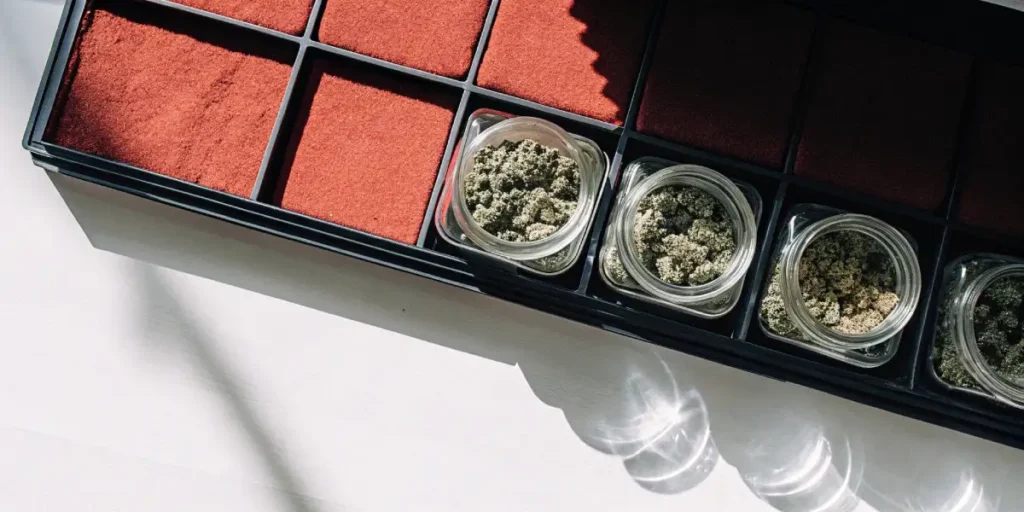
Effects of Primary Metabolites in Cannabis
The effects of primary metabolites in cannabis are diverse, ranging from psychoactive to therapeutic benefits. THC, for instance, can induce a sense of euphoria, stimulate appetite, and offer pain relief. CBD, on the other hand, can help manage anxiety, reduce seizures, and alleviate inflammation.
Terpenes and flavonoids also contribute to the plant’s therapeutic effects. Myrcene, for example, is known for its sedative properties and can help with insomnia. Flavonoids, like cannaflavin A, have anti-inflammatory properties that can aid in pain management. Check out the Green Crack strain on Blimburn Seeds to experience these effects.
The wide range of effects that primary metabolites in cannabis can induce is what makes the plant so versatile. Whether you’re seeking relief from chronic pain, anxiety, or insomnia, there’s likely a cannabis strain that can help. This is why it’s so important to understand the effects of these primary metabolites – they are the key to unlocking the full potential of cannabis.
Knowing the effects of primary metabolites in cannabis can guide consumers in their strain selection. For instance, if they’re seeking a strain with pain-relieving properties, they might look for one high in CBD and cannaflavin A. On the other hand, if they are after a euphoric experience, a strain high in THC could be the perfect choice. The key is knowing how these metabolites influence the overall effects of the strain.

FAQs About Primary Cannabis Metabolites
What are the primary metabolites of cannabis?
The primary metabolites of cannabis are cannabinoids, terpenes, and flavonoids. Cannabinoids, like THC and CBD, interact with the body’s endocannabinoid system to produce various effects. Terpenes contribute to the plant’s aroma and flavor, while flavonoids influence its color and offer additional health benefits.
Each cannabis strain has a unique profile of these metabolites, determining its effects and properties. For instance, strains with high THC levels are more likely to induce a potent ‘high,’ while those with more CBD are associated with therapeutic benefits.
Knowing the primary metabolites of cannabis is essential in making informed decisions about which strains to use or cultivate. It’s also important to note that each cannabis strain has a unique combination of these metabolites. This is why different strains can have vastly different effects, even when they come from the same plant species.
By knowing what are the primary metabolites of cannabis, consumers can align their strain selection with their desired effects. For instance, if they want a strain that can help them relax and sleep, they might look for one high in Myrcene and CBD. On the other hand, if they’re after a strain that can stimulate creativity and euphoria, a strain high in THC could be the ideal choice.
Why is it important to understand the primary metabolites in cannabis?
Identifying primary cannabis metabolites is essential for both consumers and growers. These metabolites determine the plant’s potency, aroma, flavor, and medicinal properties. By comprehending these compounds, consumers can choose strains that best meet their needs.
For growers, knowing these metabolites can guide cultivation strategies. For example, specific growing conditions can enhance the production of certain metabolites, resulting in a more desired product.
Comprehending the primary metabolites in cannabis is key to maximizing the plant’s potential. For consumers, this knowledge can guide them towards strains that best meet their needs, whether for medicinal purposes or recreational use. For growers, knowing these metabolites can help them optimize their cultivation practices to produce the desired traits in their crops.
Moreover, knowing the primary metabolites found in cannabis can also help dispel common misconceptions about the plant. For instance, not all cannabis strains produce a ‘high.’ Many strains are high in CBD and low in THC, making them ideal for medicinal use without the psychoactive effects. By comprehending these metabolites, we can promote a more informed and nuanced discussion about cannabis.
How do cannabinoids, terpenes, and flavonoids interact?
The interaction between cannabinoids, terpenes, and flavonoids is known as the ‘entourage effect.’ This means that these compounds work together to enhance the overall effects of cannabis. It’s why full-spectrum cannabis products, which contain all these metabolites, are often more beneficial than isolates.
The ‘entourage effect’ suggests that the therapeutic potential of cannabis is not just due to individual compounds. Instead, it’s the synergy of cannabinoids, terpenes, and flavonoids that make cannabis such a versatile plant.
Identifying primary cannabis metabolites and recognizing how they interact is crucial for appreciating the full potential of cannabis. The ‘entourage effect’ is a perfect example of this interaction. It’s a synergistic phenomenon where the whole is greater than the sum of its parts. This is why full-spectrum cannabis products, which contain all these metabolites, are often preferred over isolates.
Furthermore, recognizing the interplay between cannabinoids, terpenes, and flavonoids can guide consumers towards more effective cannabis products. For instance, if they’re looking for pain relief, they might opt for a full-spectrum product that contains high levels of CBD, Myrcene, and cannaflavin A. By leveraging the ‘entourage effect,’ consumers can get the most out of their cannabis.
Can the levels of primary metabolites in cannabis be altered?
Yes, the levels of primary metabolites in cannabis can be influenced by various factors. These include the plant’s genetics, growing conditions, and harvest time. Growers can manipulate these factors to enhance the production of certain metabolites.
For example, certain light conditions can increase THC production, while specific nutrient mixtures can enhance terpene profiles. It’s all about comprehending the plant’s needs and adjusting cultivation practices accordingly.
Indeed, knowing how to alter the levels of primary metabolites found in cannabis is a key skill for any grower. By manipulating factors like light, temperature, and nutrients, growers can influence the plant’s cannabinoid, terpene, and flavonoid production. This allows them to tailor their crops to meet specific needs or market demands.
For instance, if a grower wants to produce a strain high in CBD for its therapeutic benefits, they could adjust their cultivation practices to encourage more CBD production. Alternatively, if they want a strain with a distinct aroma, they could focus on enhancing terpene production. It’s all about comprehending the plant’s needs and adjusting cultivation practices accordingly.
What are some strains rich in primary metabolites?
Many cannabis strains are rich in primary metabolites. For example, the BC Diesel strain from Blimburn Seeds has high levels of both THC and CBD. Another strain, OG Kush, is known for its unique terpene profile, featuring notes of pine and citrus.
Then, there’s Green Crack, a strain known for its potent effects, largely due to its rich cannabinoid and terpene profile. By choosing a strain based on its metabolite content, consumers and growers can ensure they get the desired effects and qualities from their cannabis.
There are countless strains rich in primary metabolites, each offering a unique profile of effects. For instance, Sour Diesel is known for its high THC content and pungent aroma, thanks to its rich terpene profile. On the other hand, Charlotte’s Web is a strain high in CBD and low in THC, making it an excellent choice for those seeking therapeutic benefits without the ‘high.’
Ultimately, the key to choosing the right strain is knowing the primary metabolites of cannabis and how they influence the plant’s effects. With this knowledge, consumers and growers can make more informed decisions, ensuring they get the most out of their cannabis.


